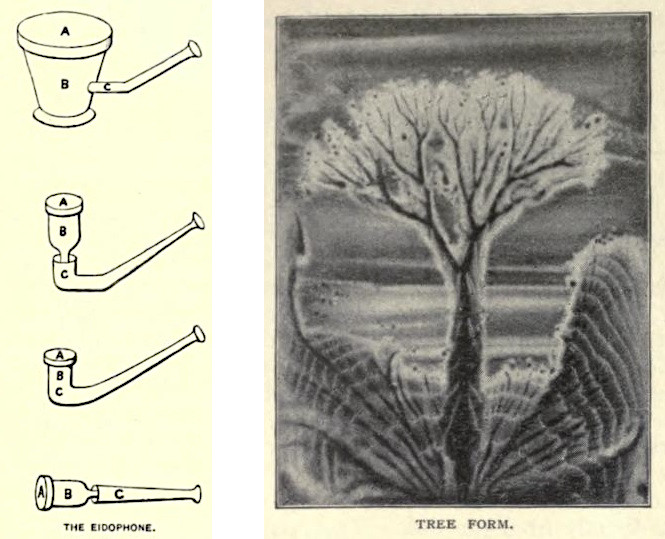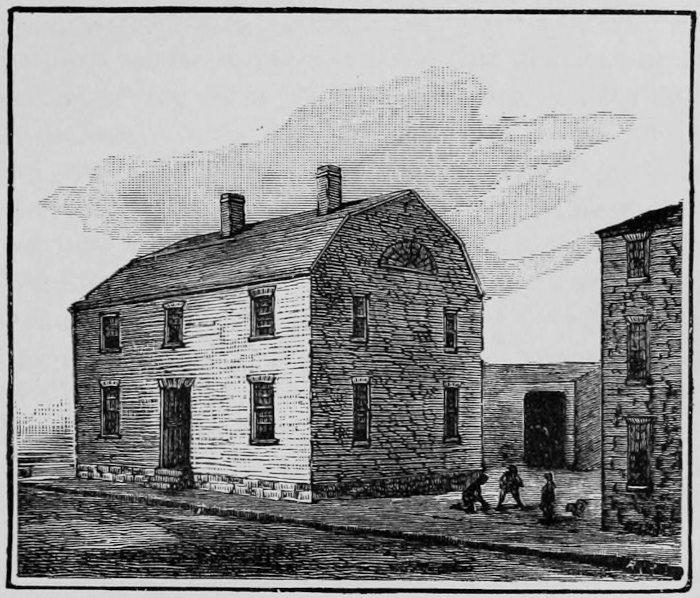
ventifact
n. a stone shaped by windblown sand

ventifact
n. a stone shaped by windblown sand
In 1696 lightning struck an oak in Normandy, and the resulting fire hollowed out the tree. Villagers filled the space with two chapels, reached by a spiral staircase that circles the trunk. Now perhaps a thousand years old, the Chêne chapelle is still in use today.
See Al Fresco.
Tennyson was plagued by autograph hunters.
As a pretext, one wrote to him asking which was the better dictionary, Webster’s or Ogilvie’s.
He replied by cutting the word Ogilvie’s from the letter, pasting it to a blank sheet of paper, and mailing it back.
See Pen Fatigue.

By substituting images for claims, the pictorial commercial made emotional appeal, not tests of truth, the basis of consumer decisions. The distance between rationality and advertising is now so wide that it is difficult to remember that there once existed a connection between them. Today, on television commercials, propositions are as scarce as unattractive people. The truth or falsity of an advertiser’s claim is simply not an issue. A McDonald’s commercial, for example, is not a series of testable, logically ordered assertions. It is a drama — a mythology, if you will — of handsome people selling, buying and eating hamburgers, and being driven to near ecstasy by their good fortune. No claims are made, except those the viewer projects onto or infers from the drama. One can like or dislike a television commercial, of course. But one cannot refute it.
— Neil Postman, Amusing Ourselves to Death, 1985

In 1885, seeking a way to depict vocal sounds visually, Welsh singer Megan Watts Hughes invented the eidophone, a chamber capped with an elastic membrane that would resonate when the singer sang into a tube. When she spread the disk with a thin layer of sand or glycerine, standing waves would register as visible patterns resembling forget-me-nots, daisies, marigolds, chrysanthemums, and sunflowers.
“Stepping out of doors,” she wrote, “[I] have seen their parallels living in the flowers, ferns, and trees around me; and … the hope has come to me that these humble experiments may afford some suggestions in regard to nature’s production of her own beautiful forms.”
The field of study she helped to pioneer is now known as cymatics — see Chladni Figures.

You know the watch argument was [William] Paley’s greatest effort. A man finds a watch and it is so wonderful that he concludes that it must have had a maker. He finds the maker and he is so much more wonderful than the watch that he says he must have had a maker. Then he finds God, the maker of the man, and he is so much more wonderful than the man that he could not have had a maker. This is what the lawyers call a departure in pleading.
— Robert G. Ingersoll, “Why I Am an Agnostic,” 1896
Seinfeld began and ended with the same line.

The Massachusetts School Law of 1642 declared ignorance to be a satanic ill:
It being one chief project of that old deluder, Satan, to keep men from the knowledge of the Scriptures, as in former times by keeping them in an unknown tongue, so in these latter times by persuading from the use of tongues, that so that at least the true sense and meaning of the original might be clouded and corrupted with love and false glosses of saint-seeming deceivers; [we resolve] that learning may not be buried in the grave of our forefathers, in church and commonwealth, the Lord assisting our endeavors.
It ordered every town of more than 50 families to hire a teacher and every town of more than 100 families to establish a grammar school, an early step toward public education in the United States.

Artist Gert Neuhaus painted this mural on a Berlin wall in 1989.
He called it The Phoenix.